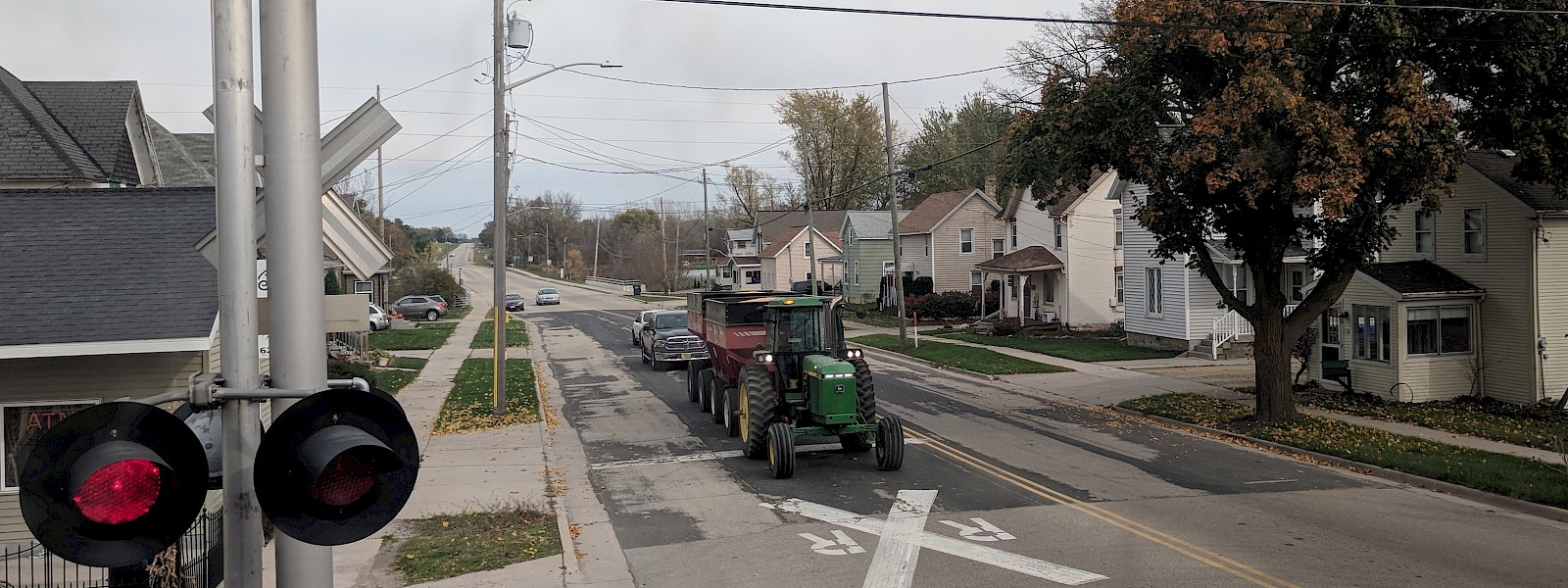FRA Long-Distance Study: Comments from Rail Advocates
The final meetings of the FRA's Long-Distance Service Study have attracted considerable interest among rail advocates. Here's a roundup of some of the commentaries. We'll add more as they become available.
June 21, 2024
Rail Passengers Association: Long-Distance Study: A Great Start, Despite Gaps
Jim Mathews posts his thoughts.
June 21, 2024
Passenger Rail in NE Oregon: The FRA’s Long-Distance Rail Study concludes
From Matt Krabacher, Baker City, Oregon
To briefly summarize for you, the Infrastructure Investment and Jobs Act (IIJA) of 2021, aka the Bi-partisan Infrastructure Law (BIL), required the FRA to conduct a study to evaluate the restoration of daily intercity rail passenger service. Their study was directed to prioritize routes that link small and large communities as part of a national rail network, improve the economic and social well-being of rural areas, and that reflects public engagement and support for the identified routes. The study has identified “15 prioritized routes” that it will recommend to congress, one of which is the “Seattle-Denver” route that would essentially be the restoration of the Pioneer route that was discontinued in 1997.
The study concluded on June 6th in Missoula and will deliver its findings “officially” to Congress later this year, but for all intents and purposes, it is over. Overall, there were no great surprises in this final meeting since most of the major reveals surrounding their preferred routes happened at their last February meeting. We did however get some good specific details in the meeting materials on the breakdown of each route’s strength and challenges, as well as a prioritized list of their 15 identified preferred routes.
The “Seattle-Denver” route is unfortunately low on this prioritized list. When comparing this route against the other preferred routes, it makes sense from a population density standpoint. Even given the exceptional growth that we have seen in places like the Boise, Portland and Seattle metro areas, the NW is just more sparsely populated than the mid-west and the east coast making it hard to string routes together that serve large populations. For example, the Seattle-Denver route is estimated to serve 1,660,000 people, with 190,000 of those being identified as “rural”. Compare that to the preferred route that received the highest rating, “Houston-New York'', which serves 5,490,000 people. 1,230,000 of those being from “rural” areas. From glancing at the ultimate prioritization list it seems like the “Population Served” metric that the FRA has identified tracks extremely closely to the ultimate prioritization of these routes.
However, there were also three routes, of the 15, that were not included in this prioritization list. One of those three is the “Seattle-Chicago” route, also known as the North Coast Hiawatha, which you may recognize as the most organized and successful national passenger rail initiative currently happening. These three routes were not given a rating as they have already been accepted into the Corridor Identification (CID) grant program (a program that also resulted from the IIJA) and are thus consider to already be in the “development stage”. The “Seattle-Chicago” route serves 1,090,000 people with 210,000 of those being identified as “rural”. Since those numbers are so comparable to the “Seattle-Denver” route, that tells me that while population density will inform how the FRA, and likely the US Congress, will prioritize development, the “Seattle-Denver” route can still move ahead. It will just take regional organization and effort to get it into the CID funding pipeline.
The major takeaways I’ve heard from those that participated in the last meeting in Missoula was that this rail network would likely take 10-15 years and that “funding” was the major obstacle facing the US long-distance passenger rail network. Unlike both auto and air travel, there is currently no sustainable, long-term funding mechanism for long-distance passenger rail in the US. Since it's inception, Amtrak has been funded by a combination of ticket sales and Congressional appropriations to make up for any shortfalls. Those appropriations are at the whim of Congress on an annual basis and is almost certainly not an option to fund the development of any of these routes, much less all of them. We need a funding mechanism that will deliver consistent resources to our public passenger rail network that is outside of the whims of Congress. There are options, such as the rental car fee Colorado used to pay for it's regional service or something similar to the way that airline products are taxed to fund the US airline industry. Ideas like this are being discussed and plans are coming together to popularize them.…
With the conclusion of the Long-Distance Rail Study, a major milestone has been reached. Something like this had to happen to bring a service like the Pioneer route back to NE Oregon. The fact that it was explicitly identified in this study means that we are at the table. There is a long road and a lot of work ahead to bring this back into reality, but the path is there. Our next milestone is getting the Pioneer into the CID grant pipeline. Once there, I will feel much better about the likelihood of its restoration. There is still the ongoing problem to figure out sustainable funding for the national rail network, but that is a national issue that everyone is paying attention to.
June 21, 2024
South Dakota Standard: Make your voice heard and demand Congress brings long-denied passenger rail service through South Dakota
All Aboard Northwest's Dan Bilka publishes his comments from South Dakota.
June 19, 2024
All Aboard Washington: Reporting from FRA and BSPRA Meetings in Missoula
AANW and AAWA share their thoughts about participating in the FRA meeting.
